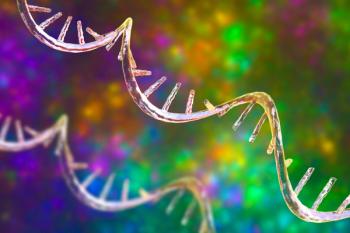
Study Finds Generative AI Outperforms Nature in Protein Design
Key Takeaways
- Generative AI surpasses natural processes in designing synthetic proteins, enhancing genome-editing tools for biopharmaceutical research and therapeutic development.
- Researchers identified over 13,000 new PiggyBac sequences, revealing significant untapped biodiversity for more versatile genome-editing tools.
The study by Integra Therapeutics and partners reveals how AI-engineered proteins could expand gene-editing tools and streamline development of advanced therapies.
Researchers from Integra Therapeutics,
The study addresses one of the persistent challenges in advanced therapies, which involves the precise and safe insertion of large DNA sequences into patient cells. Transposases, including the widely used PiggyBac system, have been at the forefront of this effort, offering the ability to copy and paste DNA into genomes. Yet their impact has been constrained by limited natural diversity and variable precision in human cell applications (3).
“Publishing this paper in Nature Biotechnology opens the way to revolutionizing the field of gene editing and advanced therapies and cements Integra Therapeutics’ position at the forefront of gene therapies and the use of innovative tools [such as] AI for protein design in our development,” said
How does biodiversity expand the genome-editing toolkit?
To overcome persistent barriers, the researchers first turned to biodiversity as a source of innovation. Using computational bioprospecting methods, the team screened more than 31,000 eukaryotic genomes and identified more than 13,000 previously unknown PiggyBac sequences (2). Laboratory testing in cultured human cells revealed 10 active transposases, with two showing activity comparable to optimized lab-engineered versions. Notably, one transposase demonstrated strong performance in human primary T cells, a cell type central to next-generation cancer therapies (2).
This finding underscores the significant untapped diversity in nature that can support the design of more versatile and precise genome-editing tools. For biopharmaceutical developers, the expanded repertoire of functional proteins may broaden the design space for engineered therapies and help address current bottlenecks in gene insertion technologies.
How was generative AI used to design proteins in the study?
Building on the biodiversity screen, the researchers applied a protein large language model trained on the newly identified sequences. The model generated novel proteins that not only maintained structural and functional coherence but also surpassed the performance of existing variants (2).
One AI-engineered transposase exhibited enhanced compatibility with find and cut-and-transfer, an advanced gene writing platform
“For the first time, we have used generative AI to create synthetic parts and expand nature. Like the cognitive power of ChatGPT can be used to write a poem, we have used the protein-based large language models to generate new elements that comply with the physical and chemical principles of genes,” said
What impact could these findings have on the future of biomanufacturing and biopharma development?
The use of generative AI in protein design represents a potential inflection point for biopharma manufacturing and development. By expanding the available toolkit of enzymes for precise DNA insertion, developers may be able to reduce dependence on naturally occurring proteins that are difficult to optimize for industrial-scale production.
“These AI models are trained with all known protein sequences on earth and learn the internal language or ‘grammar’ of proteins. Using this grammar, they are able to speak this language perfectly, generating completely new proteins that maintain structural and functional meaning,” explained
For biomanufacturing, AI-generated proteins could enable more predictable and efficient workflows, reducing variability and improving yields in engineered cell therapies. For biopharma development, these tools open opportunities for therapies previously constrained by technical barriers, particularly in oncology and genetic disease applications for which targeted, large-sequence integration is critical.
As biopharmaceutical companies move toward scalable advanced therapy platforms, the ability to design proteins beyond natural constraints may prove essential for accelerating clinical translation and expanding the therapeutic pipeline.
References
1. Integra Therapeutics.
2. Ivančić, D.; Agudelo, A.; Lindstrom-Vautrin, J.; et al. Discovery and Protein Language Model-Guided Design pf Hyperactive Transposases. Nat. Biotechnol. 2025. DOI:
3. Sun, Y.; Liu, G.; Huang, Y. Applications of piggyBac Transposons for Genome Manipulation in Stem Cells. Stem Cells Int. 2021, 2021, 3829286. DOI:
4. Integra Therapeutics.
Newsletter
Stay at the forefront of biopharmaceutical innovation—subscribe to BioPharm International for expert insights on drug development, manufacturing, compliance, and more.




